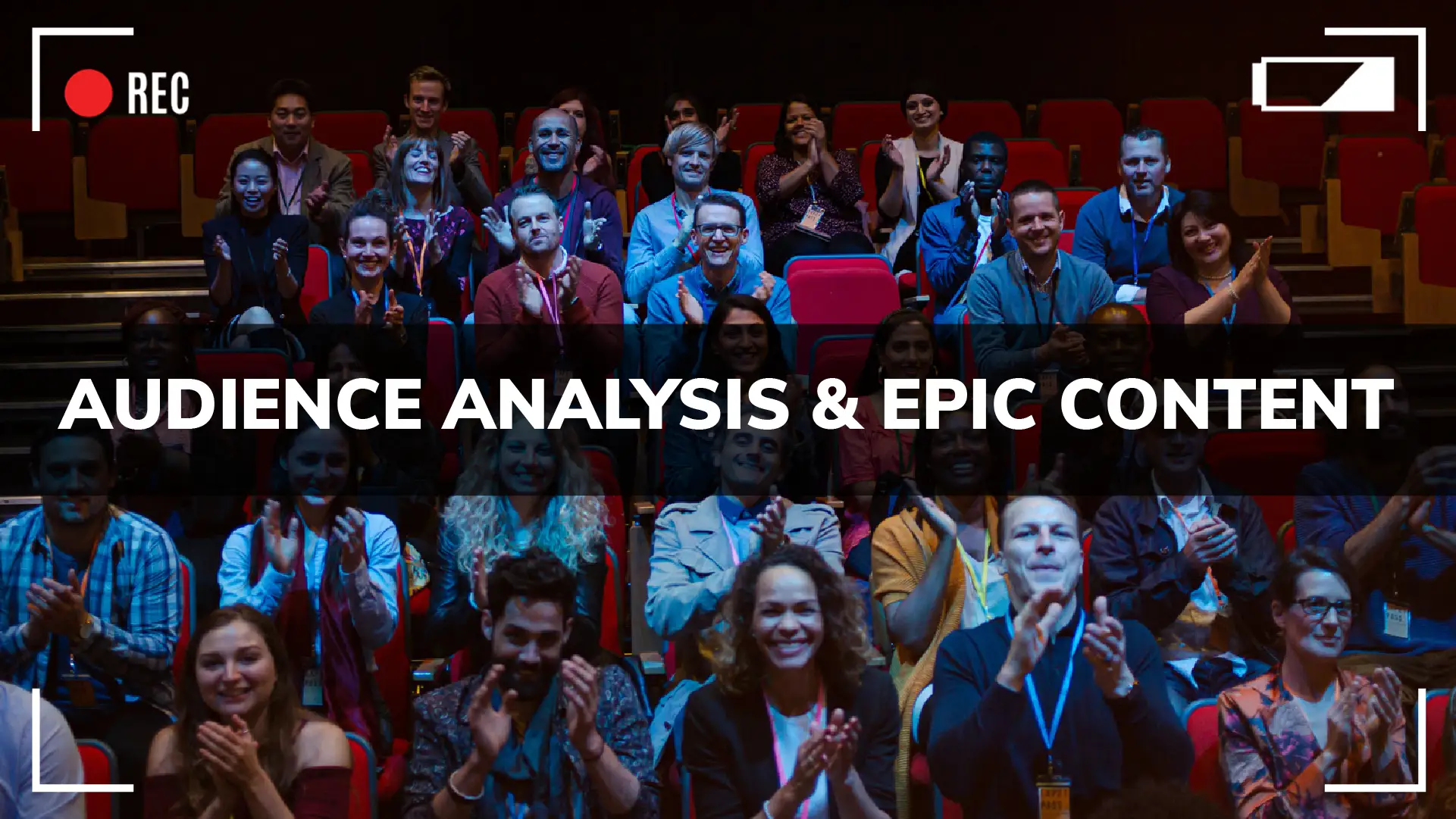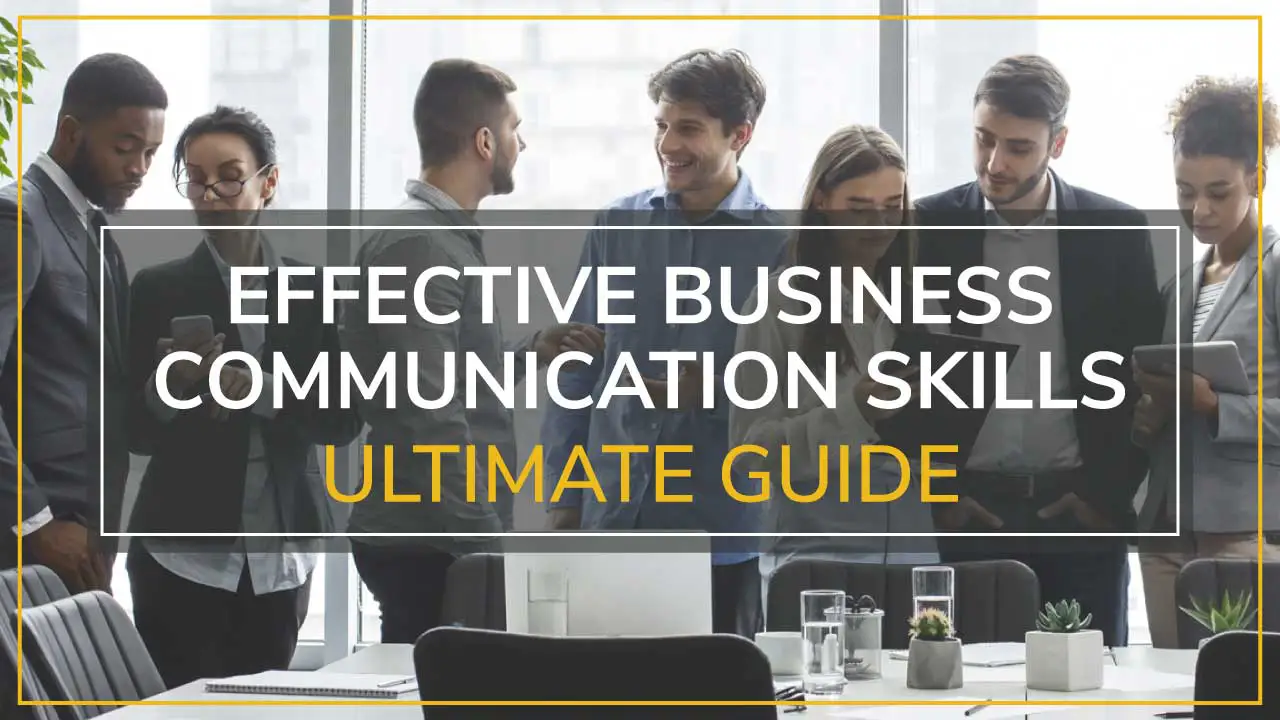Philosopher Marcus Aurelius sounds like he would be a fan of audience analysis:
“Nothing has such power to broaden the mind as the ability to investigate systematically and truly all that comes under thy observation in life.”
Table of Contents
ToggleWhat Is Audience Analysis?
In short, it’s a systematic investigation and observation, before a media appearance, that allows you to shape your message to appeal to your ideal audience.
This appearance can be anything from a recorded interview used in a print piece to a live on-camera situation—all valuable ways to promote your brand and create exciting new opportunities.
That’s why media training is such a valuable investment for yourself, your team, and your company.
In this new digital era, how you present yourself publicly has never been more important—after all, the internet is forever! Media appearances are now all shared online and through social media so a positive appearance will do wonders for your brand.
The keys to a successful interview lie in audience analysis and shaping your content, and the right media coaching can help you prepare for and tackle your next interview.
Think About Your Audience Analysis From Multiple Angles:
Every audience is different, so before making a media appearance it’s important to consider who is going to be in front of you. Is it just you and an interviewer? Is it a press conference with a large audience? Your appearance can catapult your reputation and your company’s revenue, so it’s important to take every variable into consideration.
- What are their expectations about the event, the topic, and the speaker?
We all know how annoying it feels when a spokesperson veers off topic to promote their own agenda. Knowing your audience’s expectations ensures they feel satisfied hearing what you have to say. - How much do they already know about the topic?
Are they experts? The general public? Make sure to adjust your prepared answers and information so that you come across as an authority on the subject but not condescending or out of touch. - What’s their attitude like regarding the topic?
It’s vital to understand your audience’s feelings before going live. If people are concerned, you want to reassure them. If they are angry, you want to de-escalate. The way you speak about the topic, depends entirely on this. - How large is the audience?
Small groups are likely full of similar, like-minded people which allows you to be very specific and appeal to them. However, the larger the group, the more general your messaging has to be to have a broader appeal. In general, the larger the group, the more formal the presentation. - What demographic factors—age, gender, religion, ethnicity, class, occupation, education, etc.—are at play in your audience?
Consider who is being affected by the topic you are discussing. You need to think about the virality of your message. Will people be sharing what you say in support or in opposition? Making sure you’ve tailored your message to appeal to the right group is essential. Avoid stereotyping and take time to really learn about their current perceptions. - What is the setting of the event?
This can influence both your ability to speak and the audience’s ability to listen well. Consider the temperature, time of day, location, all of these will affect how you feel as well as the mindset and attitude of your audience. - Is being in this audience voluntary?
That will help you determine how interested they are in your topic and how to create a first impression that will get them interested and on your side.
The answers to these questions can vary wildly based on the event, but you can ensure that your audience is always going to bring with them certain biases and understandings about you and your topic.
Along those same lines, what is the audience expecting when they listen to you? What do they have in common with you? Establishing credentials or finding something in common with your audience early on may be helpful. Help them understand why this topic matters to you and why they should feel the same.
A media trainer will also remind you to consider any challenges or misconceptions your audience may have about a topic. As the authority figure sharing information with the media, it’s up to you to set the record straight.
Goal Setting
As you conduct your audience analysis, it’s important to set goals for yourself and for your audience.
Consider:
- The purpose and intention of your media appearance
- Perhaps you are trying to draw attention to a problem or issue. Or maybe you have established yourself as a subject matter expert in that particular field and want to improve your credibility.
- What you want your readers or listeners to do after hearing what you have to say
- Do you want them to purchase something or accomplish something? Do you want them to change their mindset?
- Any questions you may receive and possible answers you could share that will support your message and call to action.
Keeping both sets of goals in mind as you fine-tune your content and rehearse your presentation will help ensure that both you and your audience walk away feeling satisfied, and that your message gets out there the way you intended.
Crafting Memorable Content
Now that you know who’s going to be in front of you and you’ve set your goals, structuring content for your media appearance just got a little easier.
Our favorite strategy for structuring your content is creating an Audience Journey Map to intersect with the audience analysis you conducted. Along this journey, you’ll hit three “pit stops” for organizing your content and bringing your audience along with you:
- What?
- So what?
- Now what?
As you prepare your script, think about your media appearance from the other side of the camera: what quotes, clips, or sound bites would be memorable or contribute to the story being told? You might not be the one conducting the interview, but you will want to come prepared with your preferred talking points and key takeaways to share.
Thanks to your audience analysis, the goals you just set, and the condensed nature of media interviews, you’ll know exactly what points you need to emphasize.
The Secrets to Keeping your Audience Locked In
Media appearances and interviews tend to move fast, so you’ll need to keep your audience hooked from start to finish. Think about the last great speech or presentation you heard. What kept you paying attention well through the conclusion?
The first secret, not to mention one of the main media training basics, is storytelling.
From TED speakers to CEOs, it’s the best way to bring your message to life and make it both relatable and memorable for the audience. Think of ways to weave examples, facts, and data into stories to help your audience remember the key points.
And when we say ‘story,’ we don’t mean you have to go through the trouble of making something up. Just ask yourself, “What story do I want to tell?”
- Is it your personal story?
- The story of your company?
- The story of how your new idea or invention came to be?
The second secret is understanding that you are selling your message.
Audiences may have no context or knowledge of what you’re talking about so you need to talk about each point with clarity and in an engaging way. If you don’t sound interested in what you’re saying, no one will listen or buy into what you are bringing to the table. Selling doesn’t necessarily mean you want your audience to spend money with you, but instead you want your ideas to resonate with them and your takeaways to keep them thinking.
Selling to your audience is a technique that can be hard to master; it requires understanding how to be authentic and speak with passion. Ensuring how you speak will translate well on screen or in print takes experience or the expert guidance of a media coach.
Start and Finish Strong
You have seven seconds to make a first impression on your audience: those watching and listening to you are deciding if they like you, trust you, and view you as an authority.
Most of this communication is nonverbal; it’s what you wear, how you carry your body, if you smile and make eye contact. Confidence is nonverbal—it’s the reason politicians and public speakers practice to exude confidence!
Let your audience know you’re happy to be there and are excited for the opportunity to share your message on a larger stage. A media appearance can and should be an enjoyable opportunity to tell your story and make a difference.
As you wrap up your media interview, it’s important to bridge your story: tell us how your story was important or how it relates to a larger issue. Finally, make sure you share a call to action: what do you want someone listening to do, think, feel, or say?
Wrapping It Up
Conducting an audience analysis and using it to shape your content will ensure that your message is shared the way you want and the goals of your media appearance are accomplished.
Rehearsing with an interview or media coach will help you refine your on-camera presence and teach you how to relax. By telling your story with passion and using engaging nonverbal communication strategies, your audience will be locked in from start to finish.
When taking advantage of live opportunities, things might not always go according to plan—and that’s okay! You may run out of time or get cut off. This won’t be as intimidating as it sounds if you know your content inside and out, have conducted an audience analysis, and have a great media coach to rely on. This opportunity is your time to shine.
Keep an eye out for the next Moxie blog post where we’ll share our top tips for looking like a pro on camera.
TAKE THE FIRST STEP TO MASTER POWERFUL NEW SKILLS
Schedule an easy 30-minute call using our using our calendar. We’re here to help!











